Похожие презентации:
Respiratory system power point
1. Respiratory Physiology
2. Functions of the respiratory system
• Moving air to the exchange surface of the lungs• Gas exchange between air and circulating blood
• Protection of respiratory surfaces (from dehydration,
temperature changes, and defending the RS from invading pathogens)
• Production of sound
• Provision for olfactory sensations
3. The Components of the Respiratory System
4. The Components of the Respiratory System
• Conducting Zone.• Respiratory Zone
5. Conducting Zone
• All the structures airpasses through before
reaching the
respiratory zone.
• Function:
• Warms and humidifies
inspired air.
• Filters and cleans:
• Mucus secreted to
trap particles in the
inspired air.
• Mucus moved by
cilia to be
expectorated.
Insert fig. 16.5
6. Respiratory Zone
• Region of gasexchange
between air
and blood.
• Includes
respiratory
bronchioles
and alveolar
sacs.
7. The Bronchi and Lobules of the Lung
8. Respiratory Membrane
9. Respiratory Membrane
10. Respiratory Membrane
• This air-blood barrier is composed of:• Alveolar and capillary walls
• Their fused basal laminas
• Alveolar walls:
• Are a single layer of type I epithelial cells
• Permit gas exchange by simple diffusion
• Type II cells secrete surfactant
11. Respiratory Volumes
• Tidal volume (TV) – air that moves into andout of the lungs with each breath (approximately
500 ml)
• Inspiratory reserve volume (IRV) – air that
can be inspired forcibly beyond the tidal volume
(2100–3200 ml)
• Expiratory reserve volume (ERV) – air that
can be evacuated from the lungs after a tidal
expiration (1000–1200 ml)
• Residual volume (RV) – air left in the lungs
after maximal forced expiration (1200 ml)
12. Respiratory Capacities
• Inspiratory capacity (IC) – total amount of airthat can be inspired after a tidal expiration (IRV +
TV)
• Functional residual capacity (FRC) –
amount of air remaining in the lungs after a tidal
expiration
(RV + ERV)
• Vital capacity (VC) – the total amount of
exchangeable air (TV + IRV + ERV)
• Total lung capacity (TLC) – sum of all lung
volumes (approximately 6000 ml in males)
13. Respiratory Volumes and Capacities
14. Dead Space
• The volume of the airways that does notparticipate in gas exchange
• Anatomical dead space – volume of the
conducting respiratory passages (150 ml)
• Functional dead space – alveoli that cease to
act in gas exchange due to collapse or obstruction
• Physiological dead space – sum of alveolar
and anatomical dead spaces
15. Mechanics of Breathing
16. Pulmonary Ventilation
• The physical movement of air into and out of thelungs
17. Air movement
• Movement of air depends upon• Boyle’s Law
• Pressure and volume inverse relationship
• Volume depends on movement of
diaphragm and ribs
18. Inspiration
• Inspiration• Diaphragm contracts -> increased thoracic
volume vertically.
• Intercostals contract, expanding rib cage ->
increased thoracic volume laterally.
• Active
• More volume -> lowered pressure -> air in.
• (Negative pressure breathing.)
19. Expiration
• Expiration• Due to recoil of elastic lungs.
• Passive.
• Less volume -> pressure within alveoli is
above atmospheric pressure -> air leaves
lungs.
• Note: Residual volume of air is always left
behind, so alveoli do not collapse.
20. Mechanisms of Pulmonary Ventilation
21. Gas Exchange
22. The gas laws
• Daltons Law and partial pressure• Individual gases in a mixture exert
pressure proportional to their
abundance
• Diffusion between liquid and gases
(Henry’s law)
• The amount of gas in solution is directly
proportional to their partial pressure
23. Henry’s Law and the Relationship between Solubility and Pressure
24. Diffusion and respiratory function
• Gas exchange across respiratorymembrane is efficient due to:
• Differences in partial pressure
• Small diffusion distance
• Lipid-soluble gases
• Large surface area of all alveoli
• Coordination of blood flow and airflow
25. Gas Pickup and Delivery
26. An Overview of Respiratory Processes and Partial Pressures in Respiration
27. Gas Exchange in the Lungs and Tissues: Oxygen
28. Gas Transport in the Blood: Oxygen
• 2% in plasma• 98% in
hemoglobin (Hb)
• Blood holds O2
reserve
29. Oxygen transport
• Carried mainly by RBCs, bound to hemoglobin• The amount of oxygen hemoglobin can carried is
dependent upon:
• PO2
• pH
• temperature
• DPG
• Fetal hemoglobin has a higher O2 affinity than
adult hemoglobin
30. Hemoglobin Transport of Oxygen
• 4 binding sites per Hb molecule• 98% saturated in alveolar arteries
• Resting cell PO2 = 40 mmHg
• Working cell PO2 = 20 mmHg
• More unloaded with more need
• 75% in reserve at normal activity
31. Hemoglobin Saturation Curve
32. Factors Influencing Hemoglobin Saturation
• Temperature, pH, PCO2, and DPG• Increase of temperature, PCO2, and DPG and
decrease of pH :
• Decrease hemoglobin’s affinity for oxygen
• Enhance oxygen unloading from the blood
• Decreases of temperature, PCO2, and DPG and
the increase of pH act in the opposite manner
• These parameters are all high in systemic
capillaries where oxygen unloading is the goal
33. The Effect of pH and Temperature on Hemoglobin Saturation
34. A Functional Comparison of Fetal and Adult Hemoglobin
35. Carbon dioxide transport
• 7% dissolved in plasma• 70% carried as carbonic acid
• buffer system
• 23% bound to hemoglobin
• carbaminohemoglobin
• Plasma transport
36. Carbon Dioxide Transport in Blood
37. Summary of gas transport
• Driven by differences in partial pressure• Oxygen enters blood at lungs and leaves at tissues
• Carbon dioxide enters at tissues and leaves at
lungs
38. A Summary of the Primary Gas Transport Mechanisms
39. Control of Respiration
40. Respiratory centers of the brain
• Medullary centers• Respiratory rhythmicity centers set pace
• Dorsal respiratory group (DRG)– inspiration
• Ventral respiratory group (VRG)– forced
breathing
41. Respiratory centers of the brain
• Pons• Apneustic and pneumotaxic centers:
regulate the respiratory rate and the
depth of respiration in response to
sensory stimuli or input from other centers
in the brain
42. Respiratory Centers and Reflex Controls
43. Chemoreceptors
• Chemoreceptors are located throughout thebody (in brain and arteries).
• chemoreceptors are more sensitive
to changes in PCO (as sensed through
2
changes in pH).
Ventilation is adjusted to maintain
arterial PC02 of 40 mm Hg.
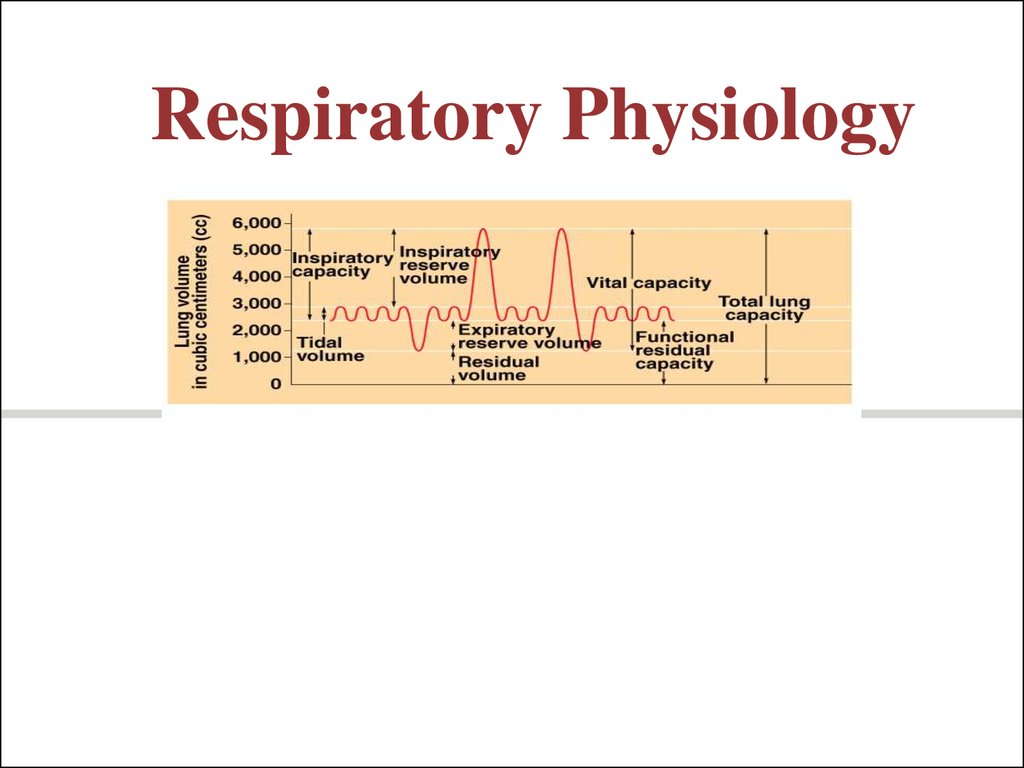




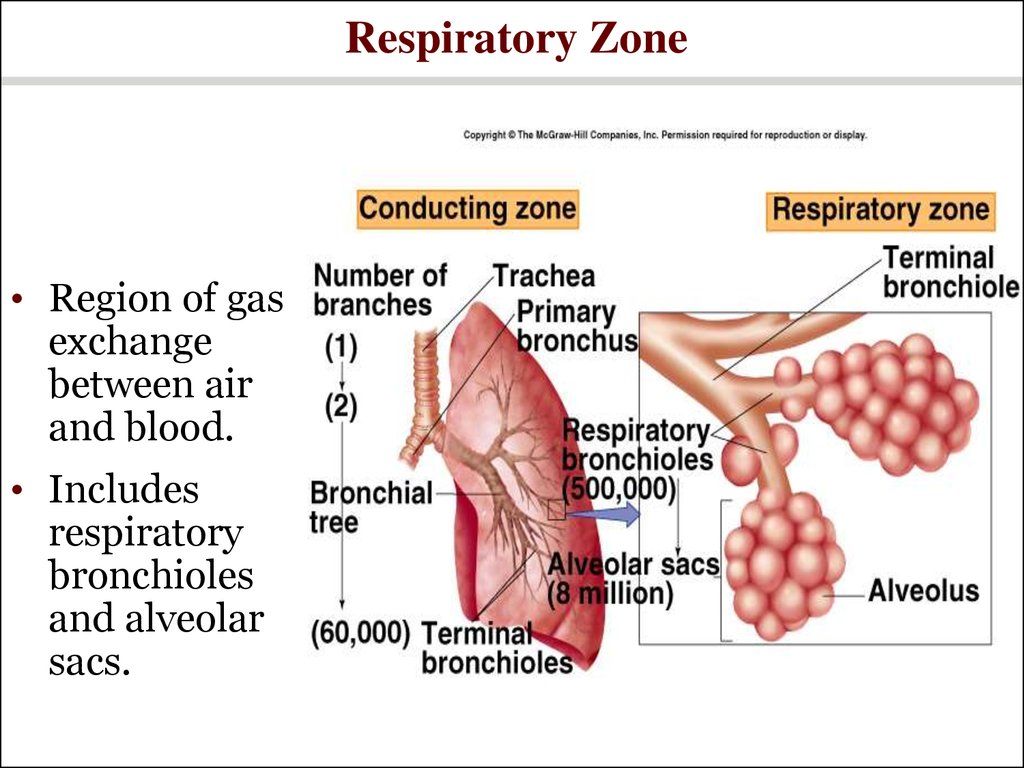

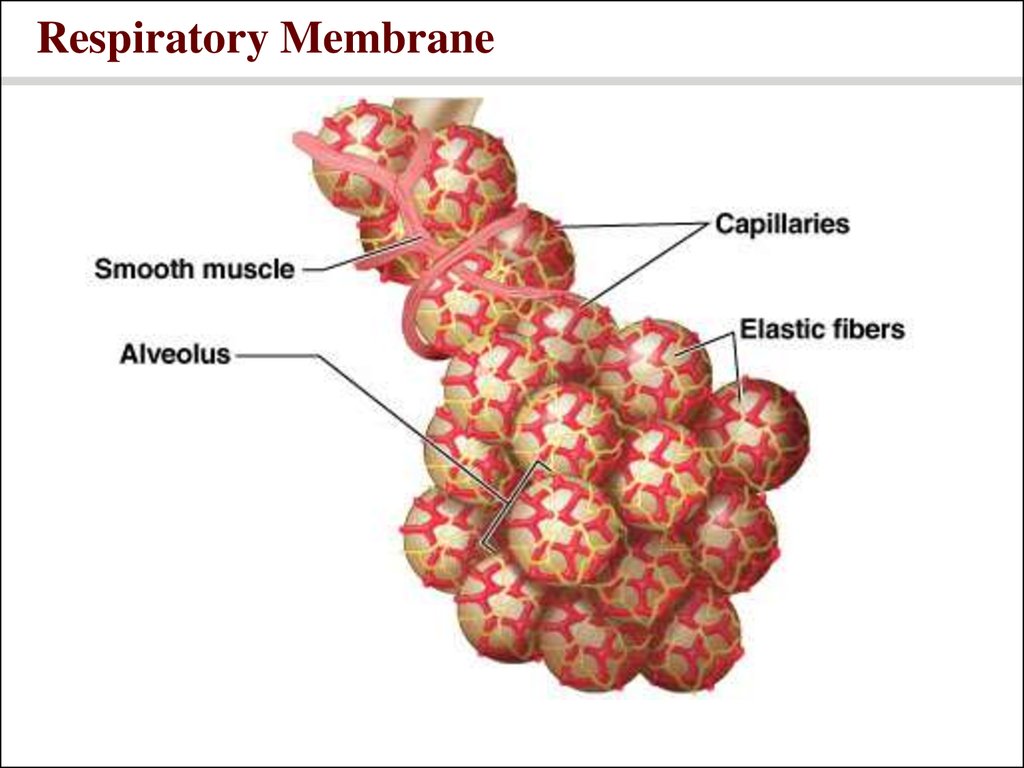
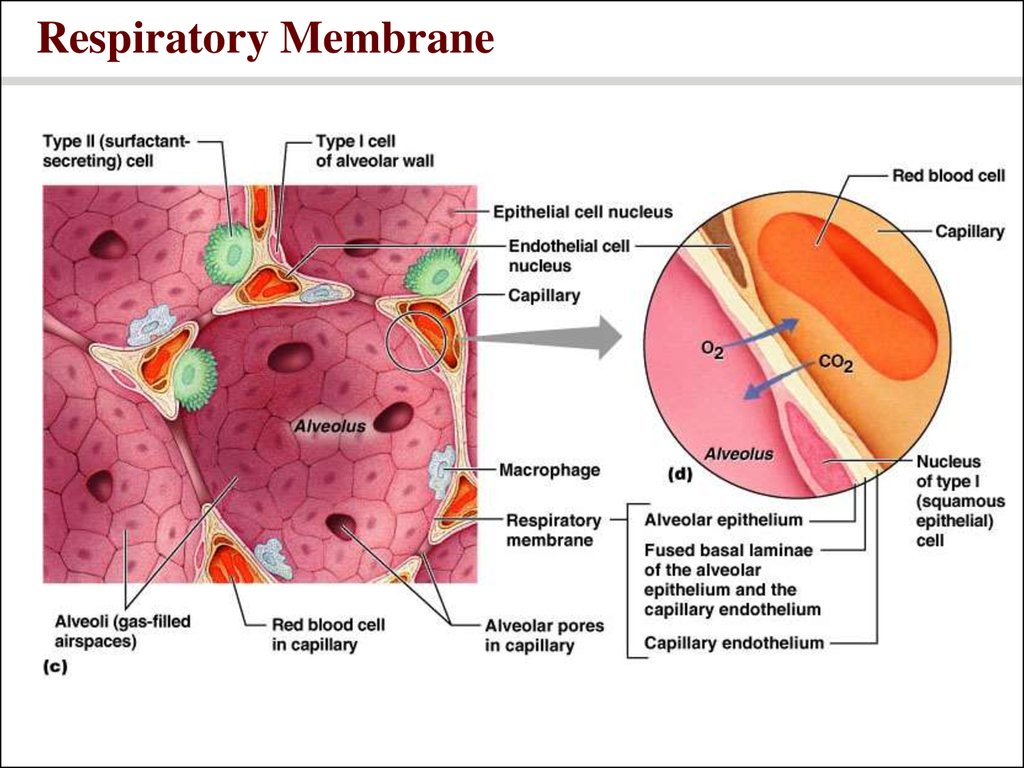
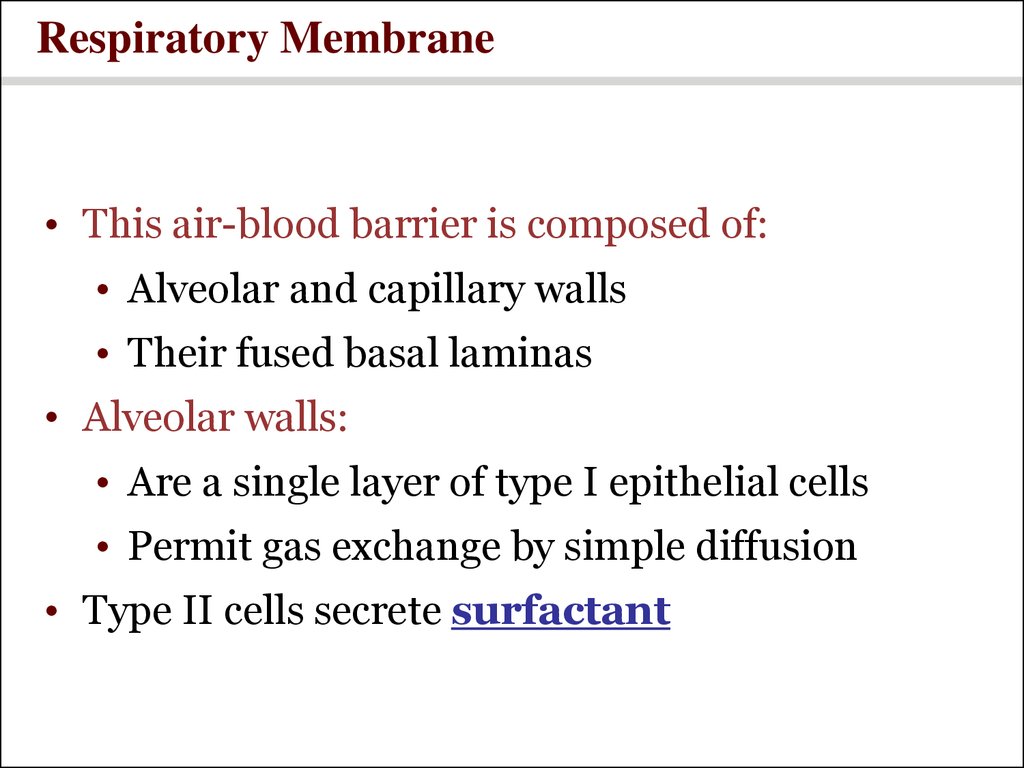
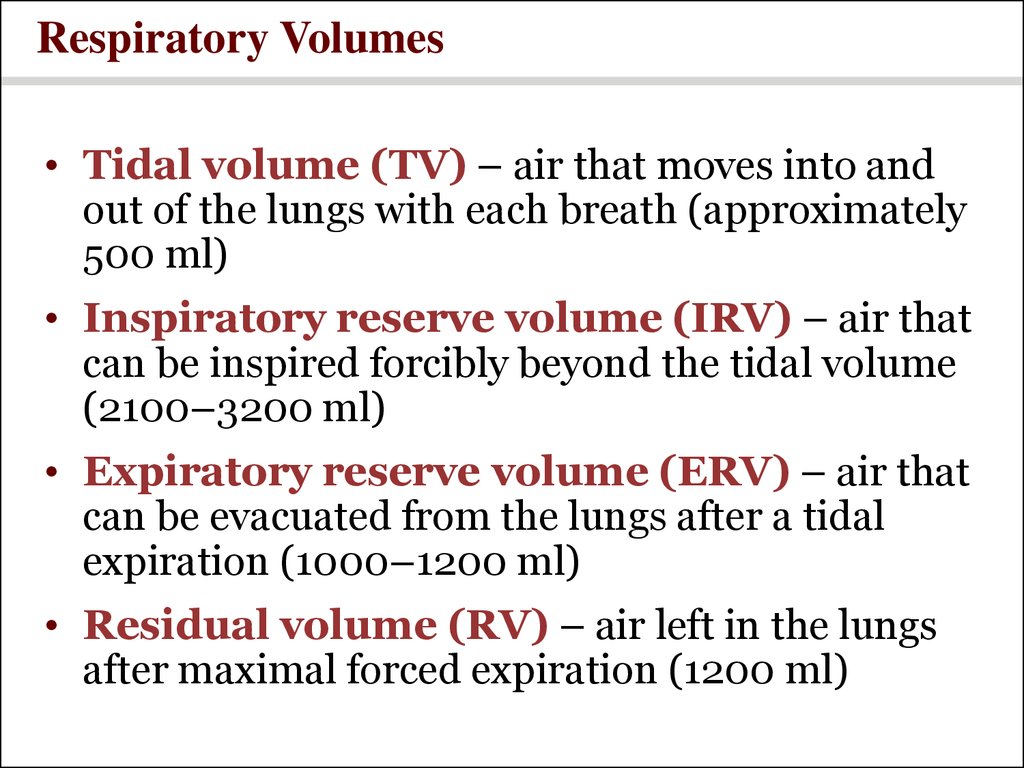
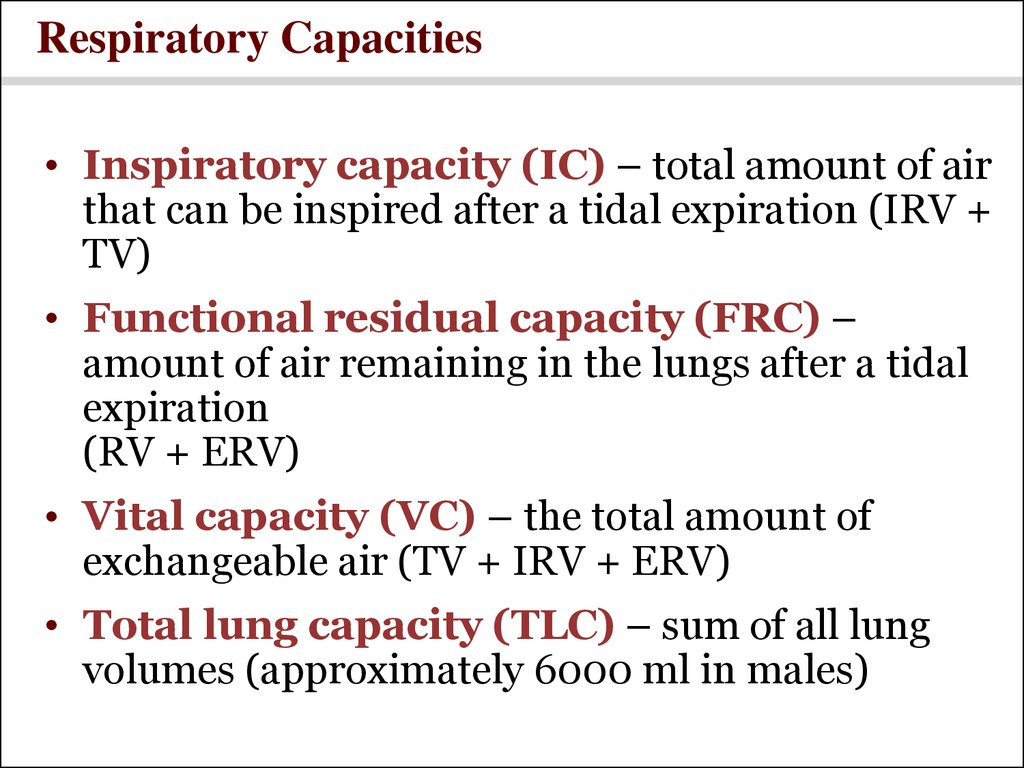
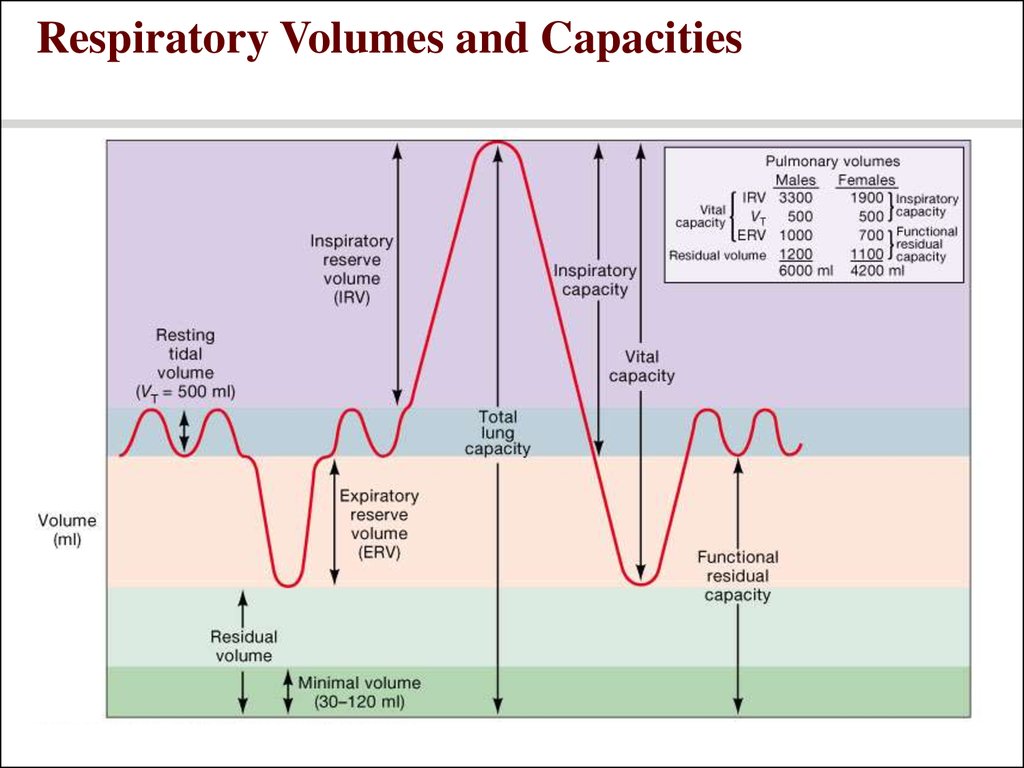
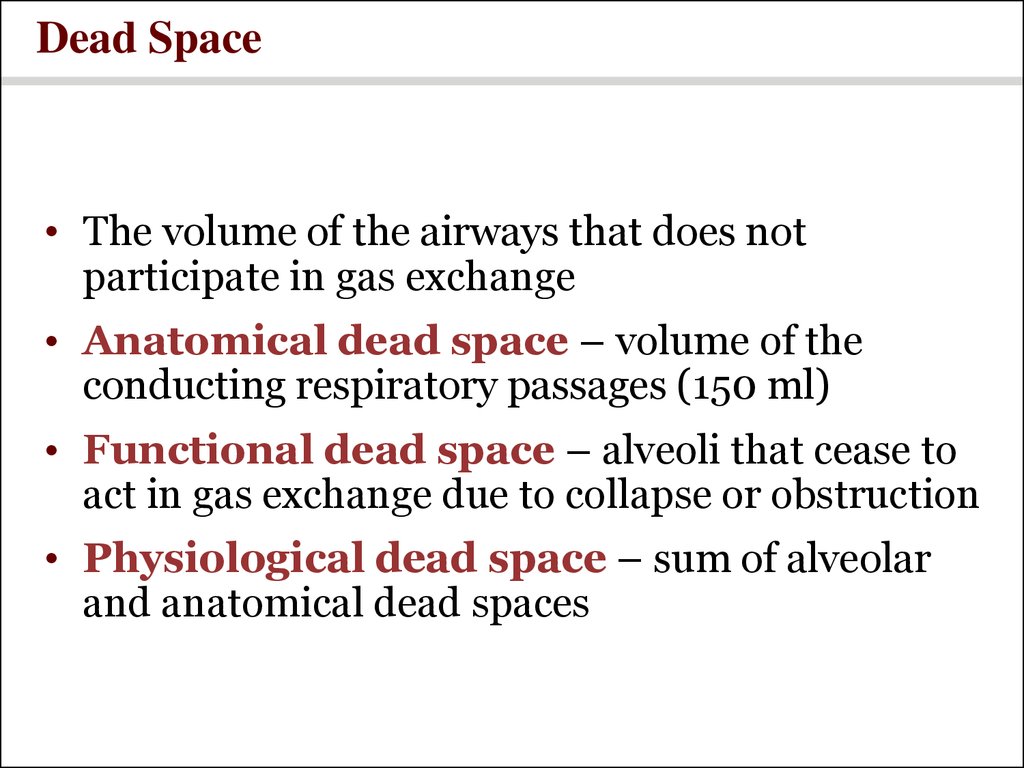

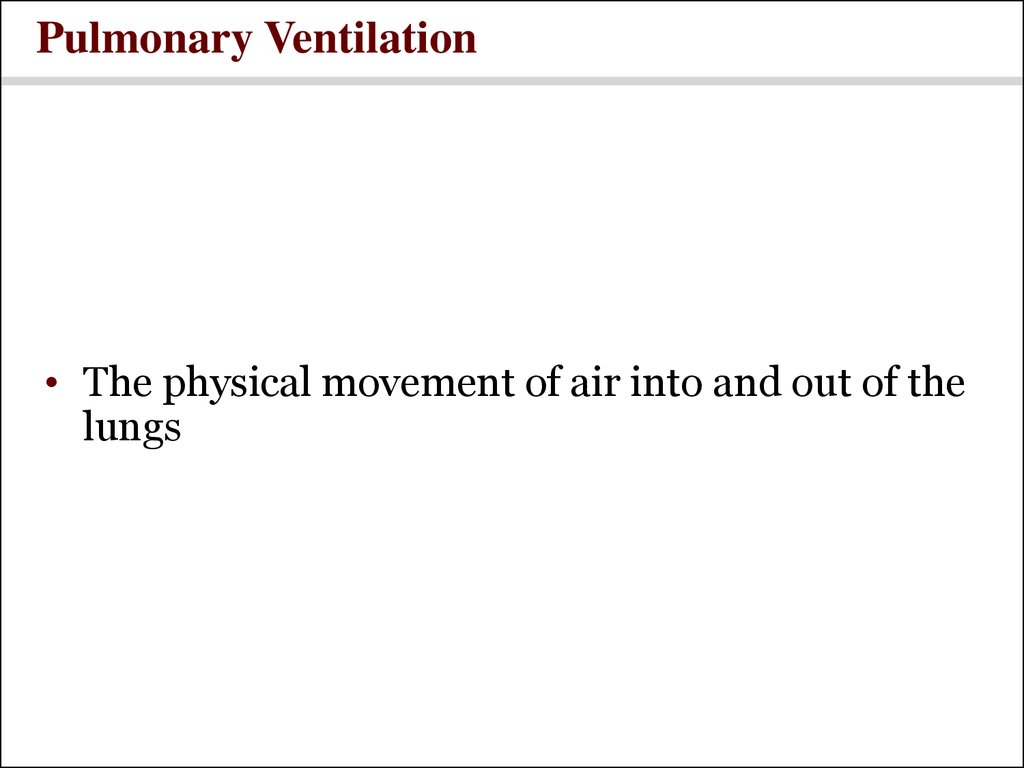
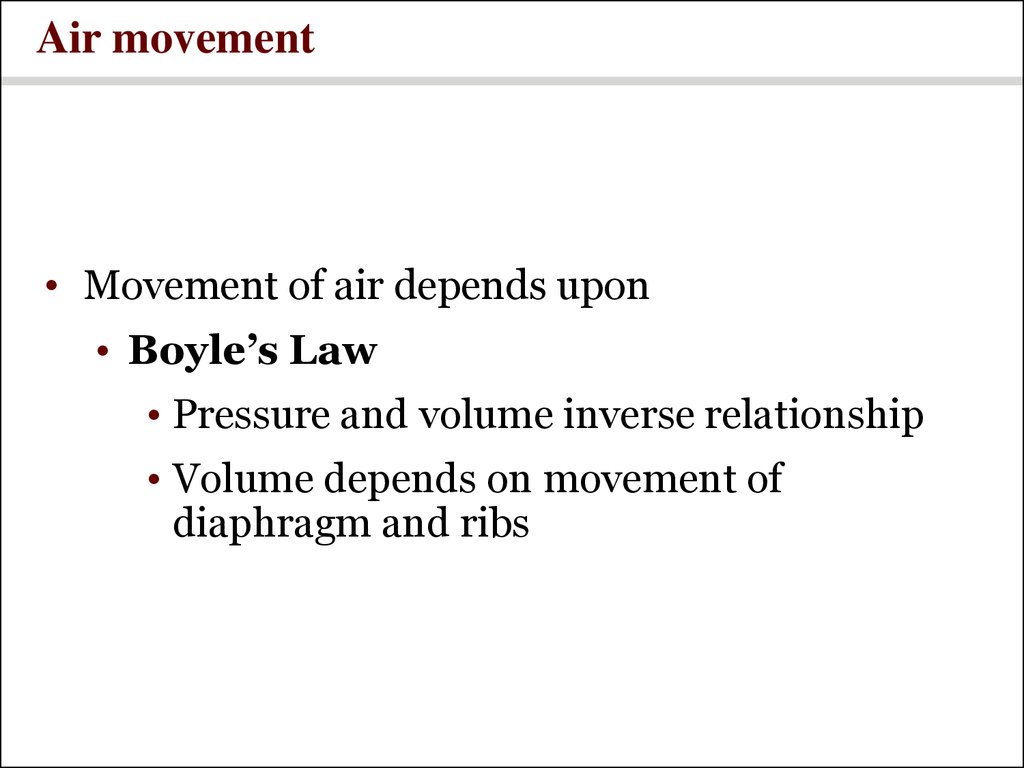
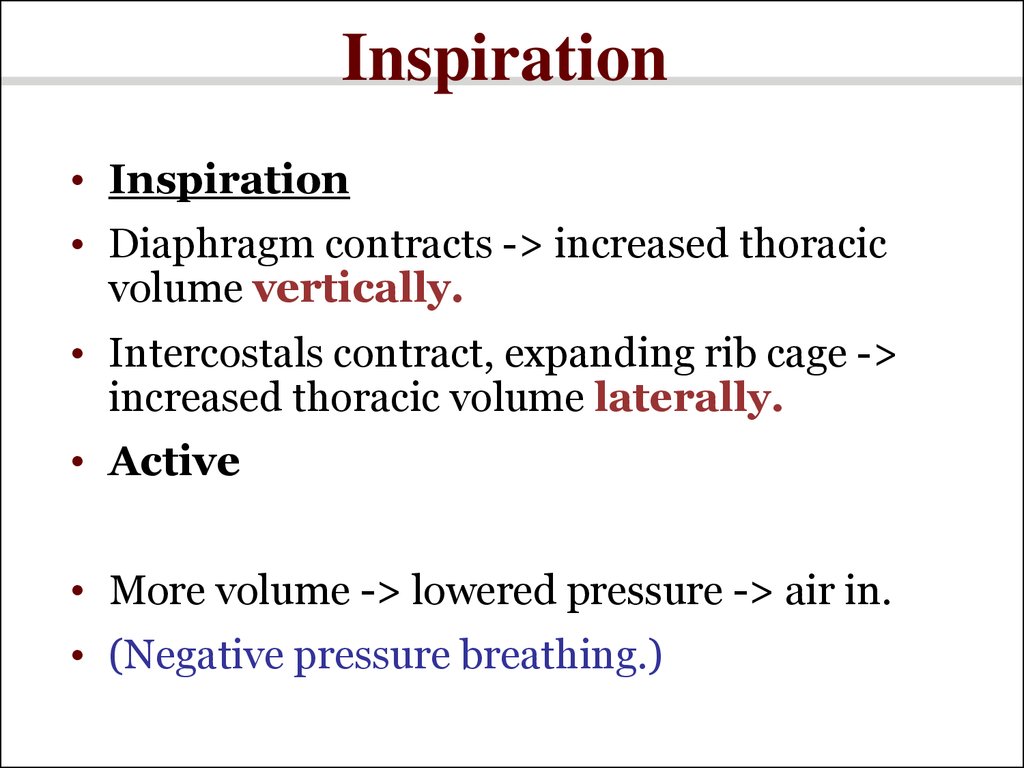
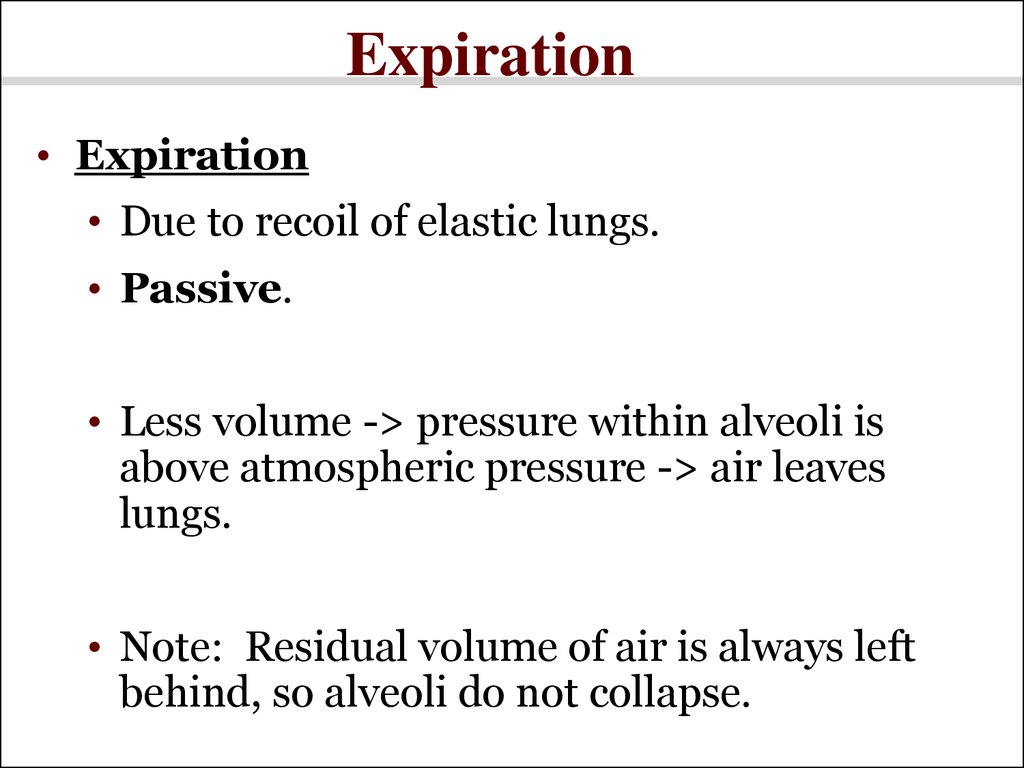
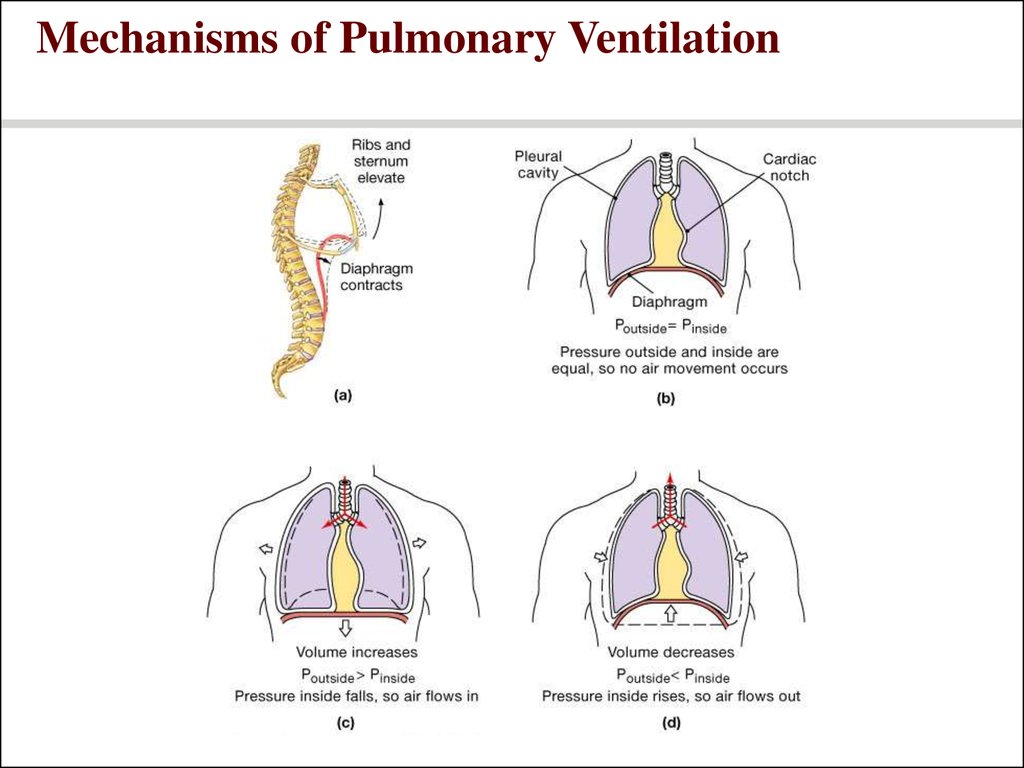
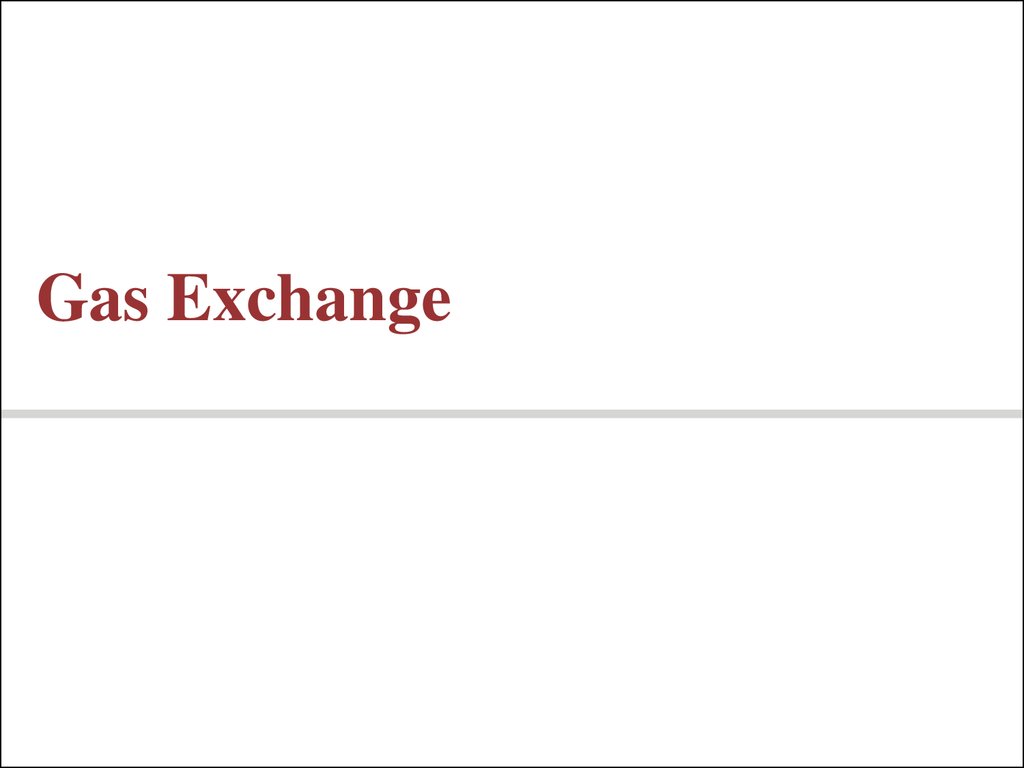
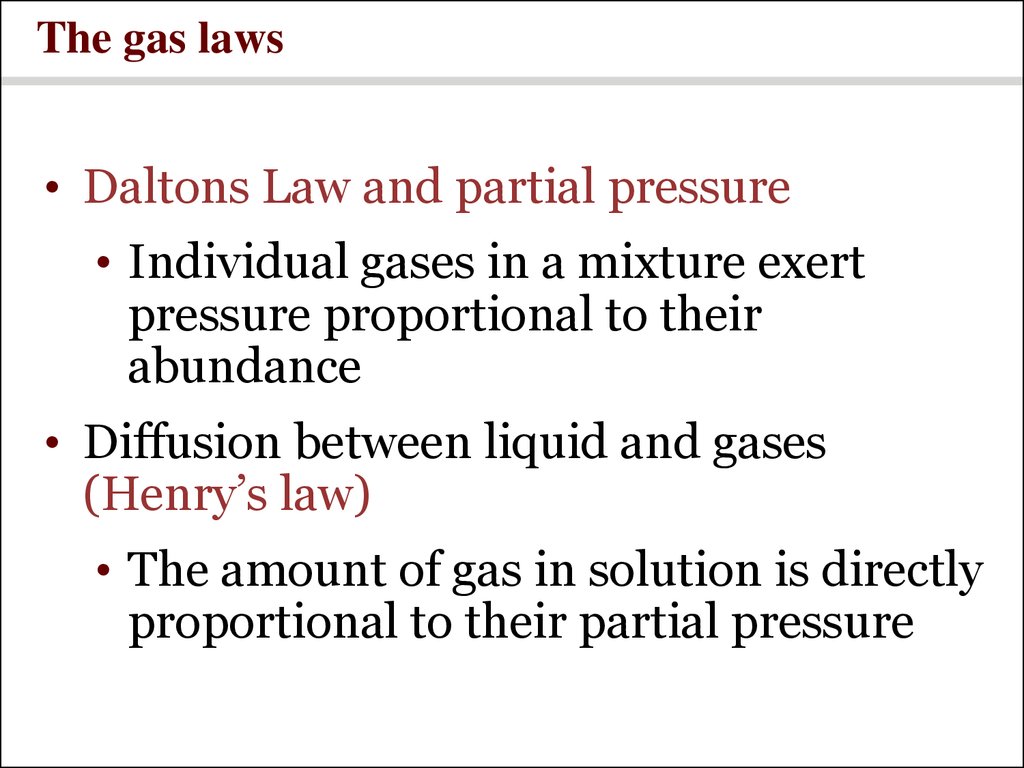

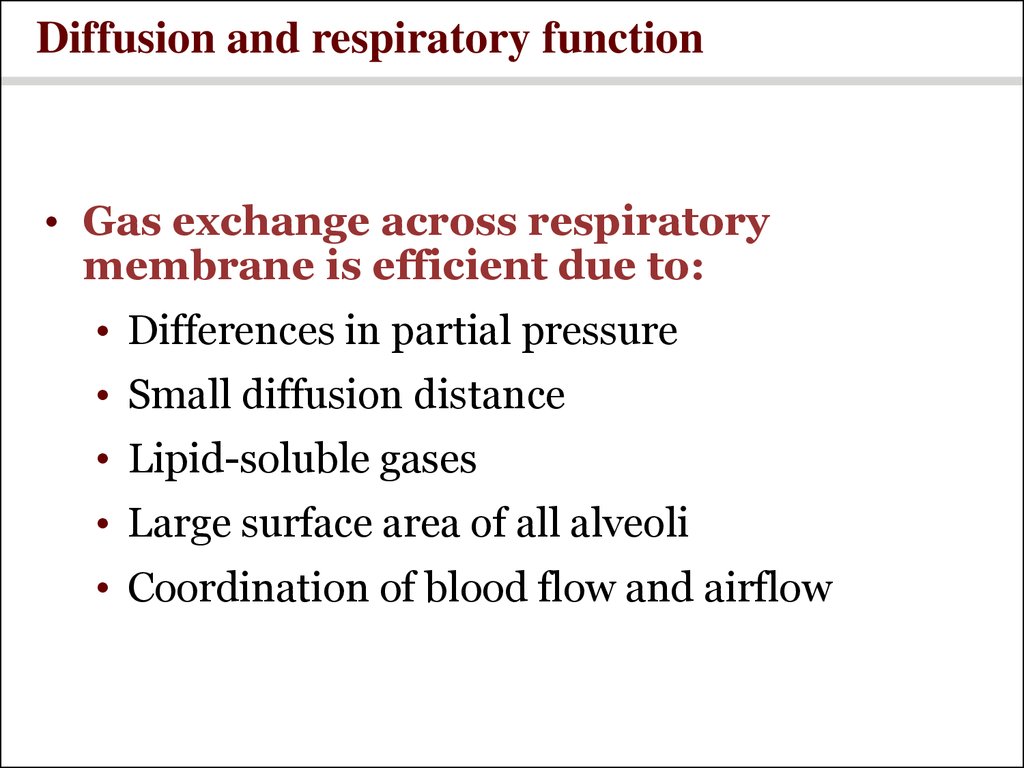
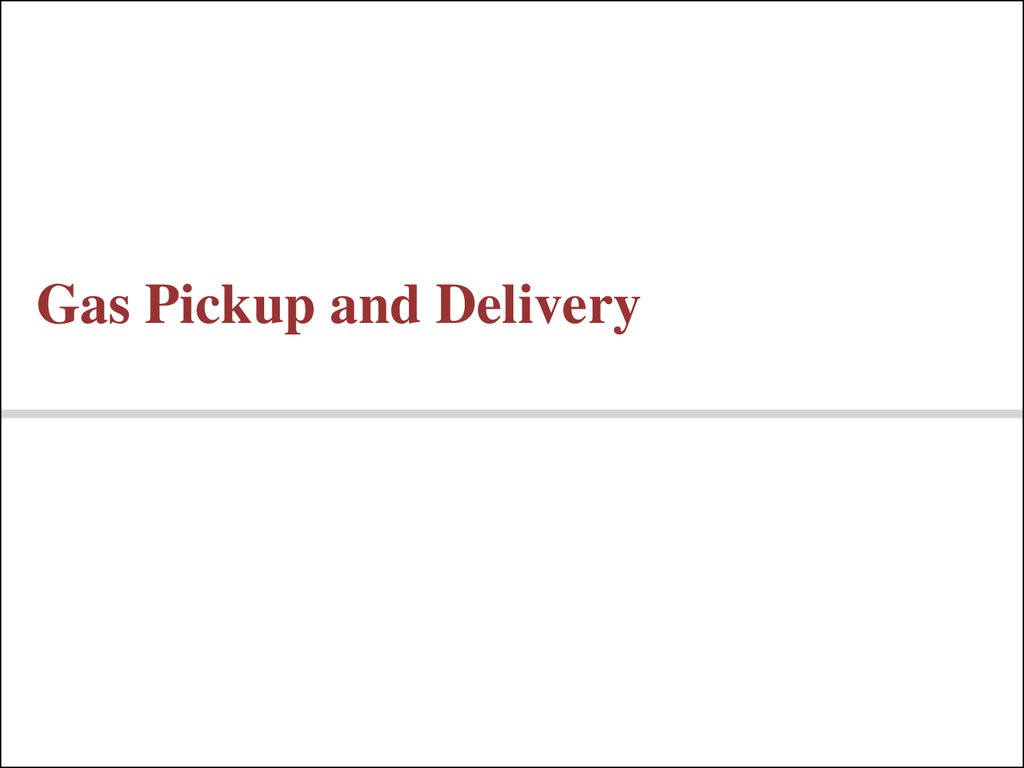

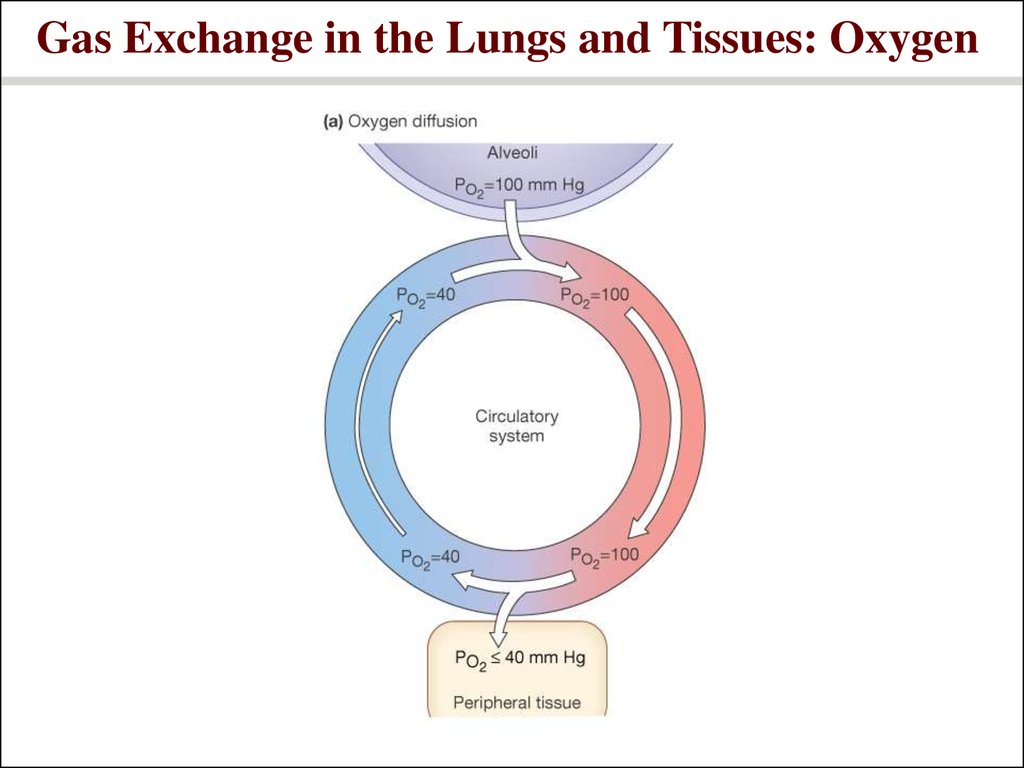
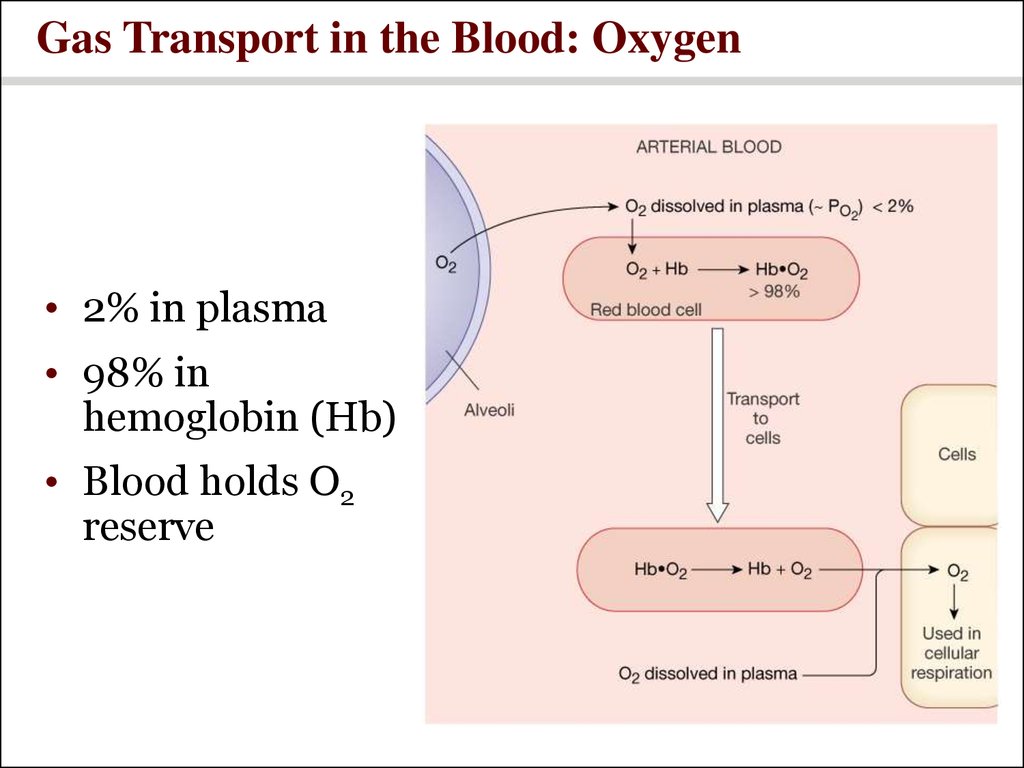
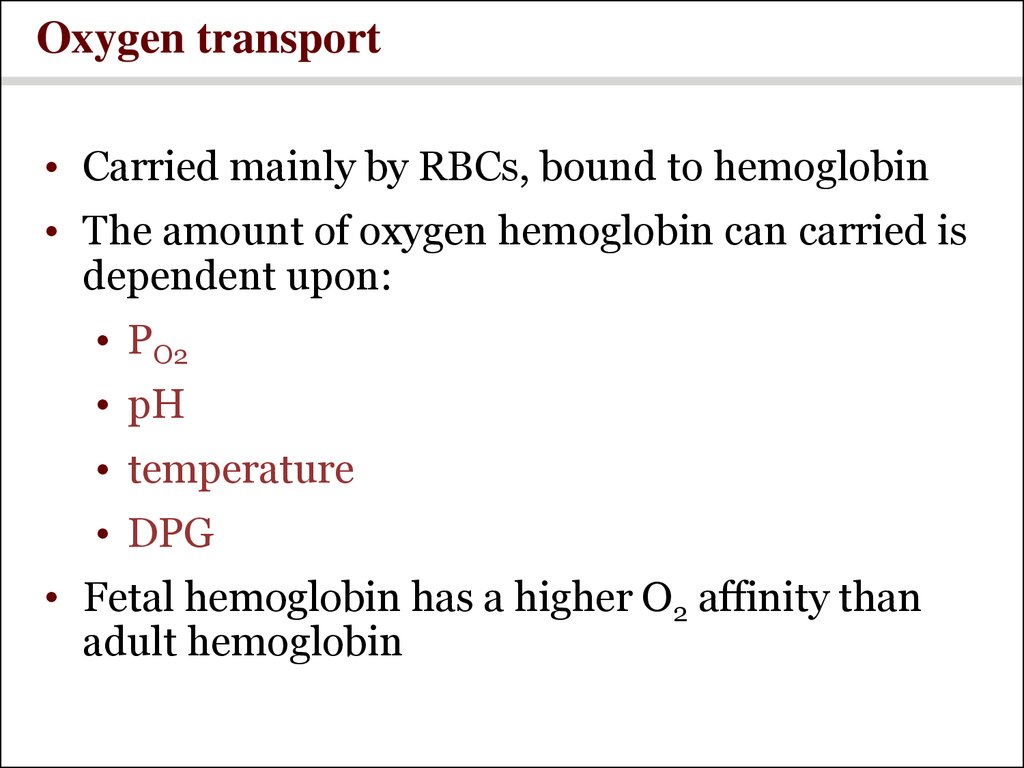
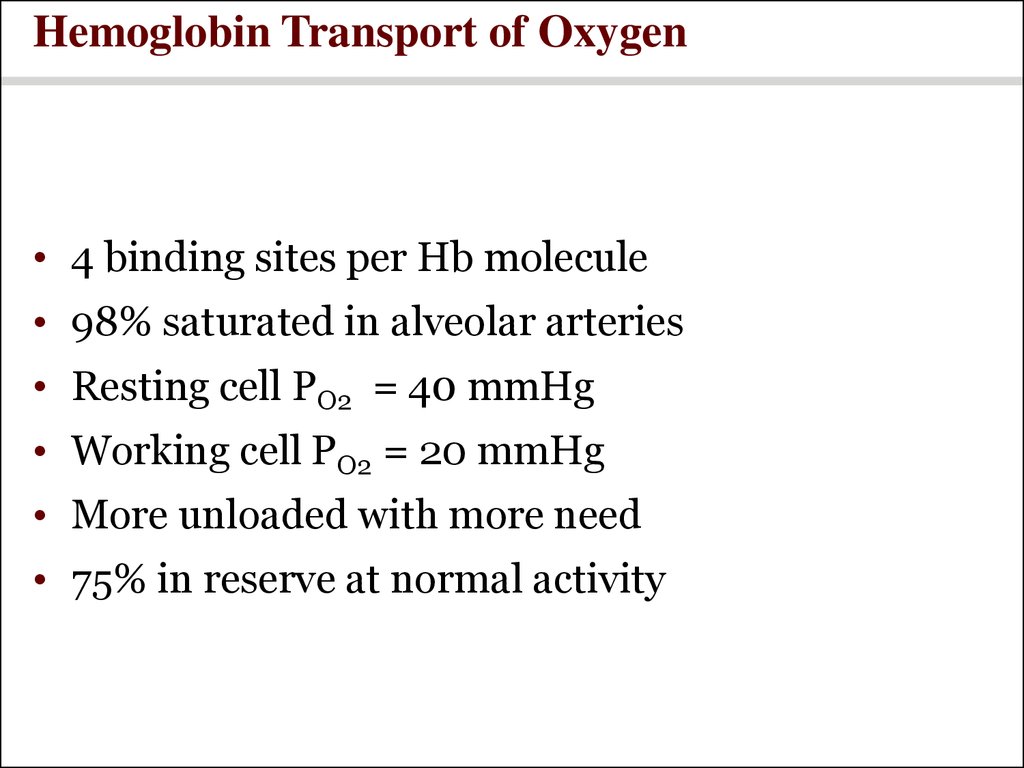
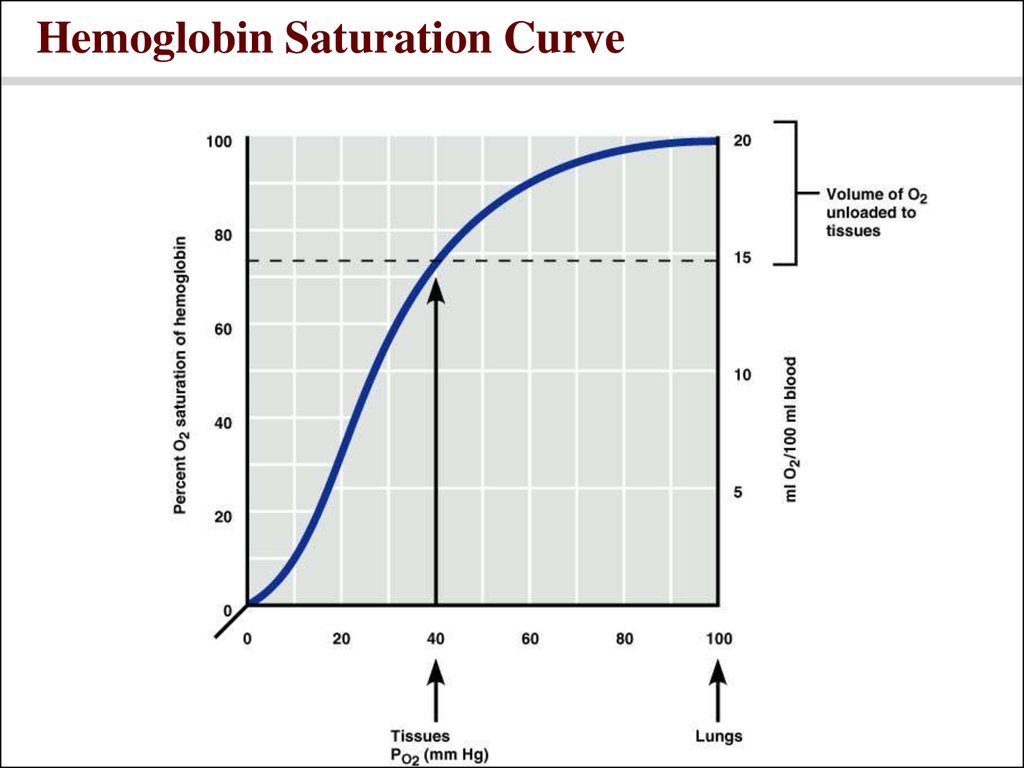
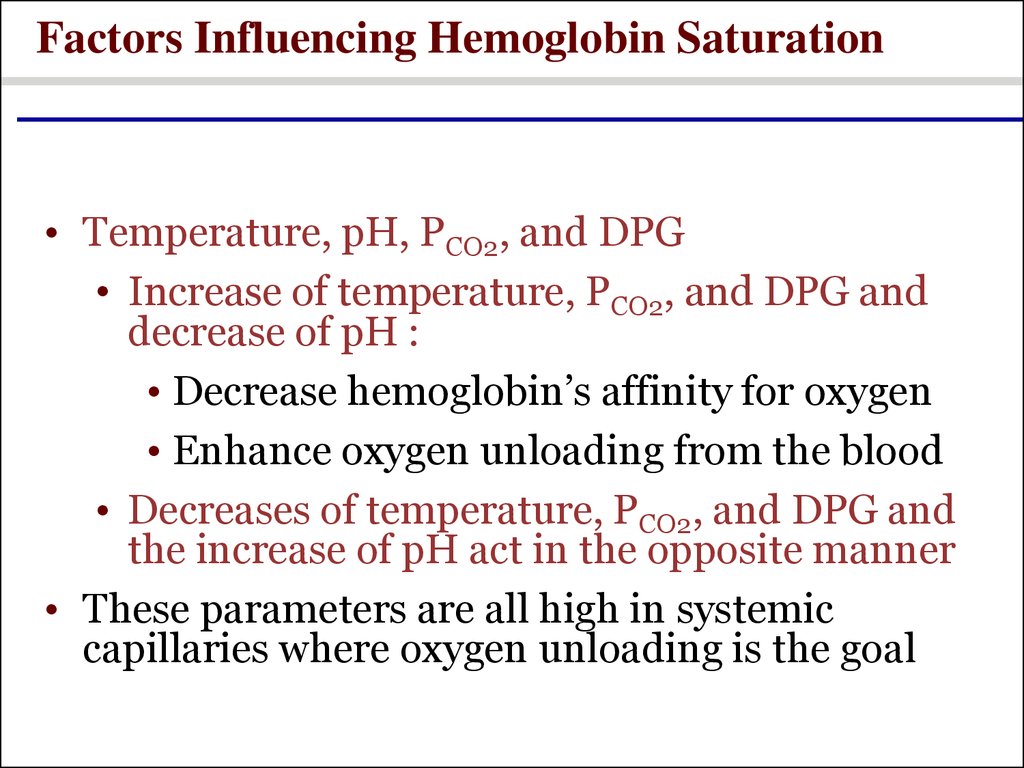
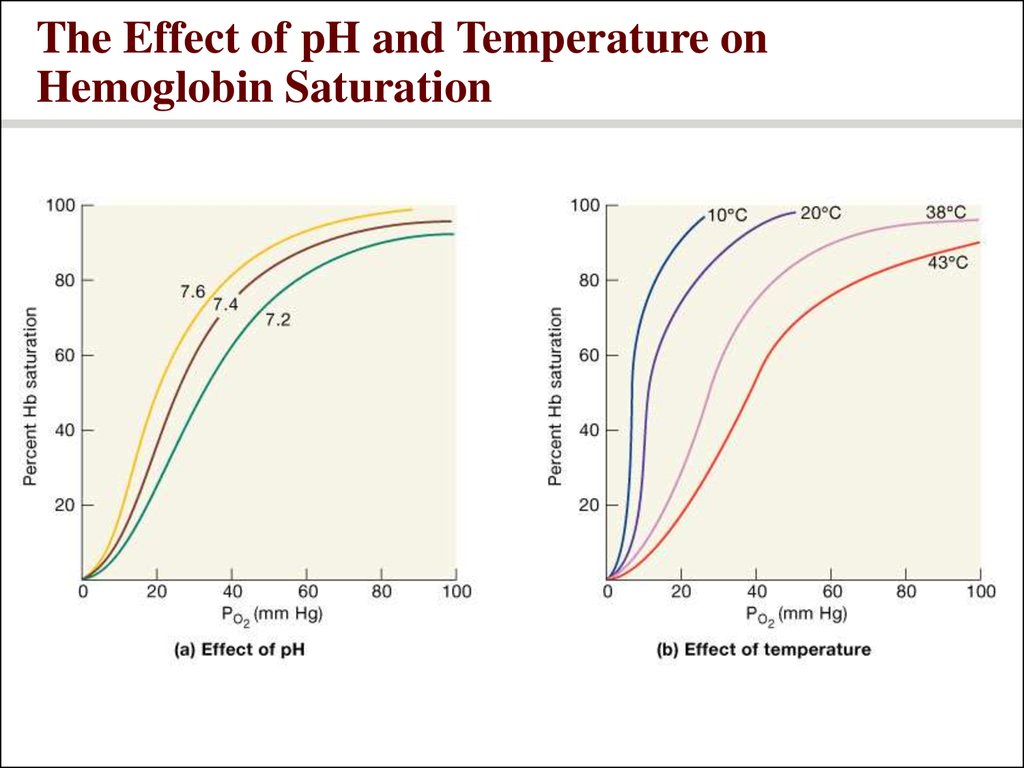
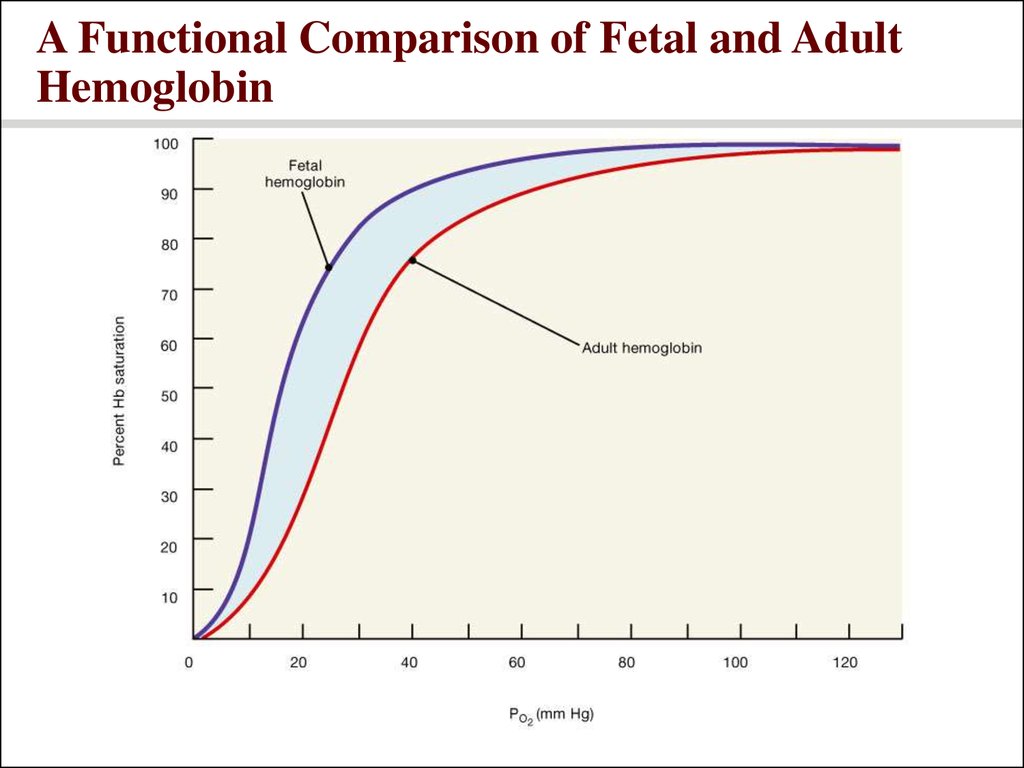
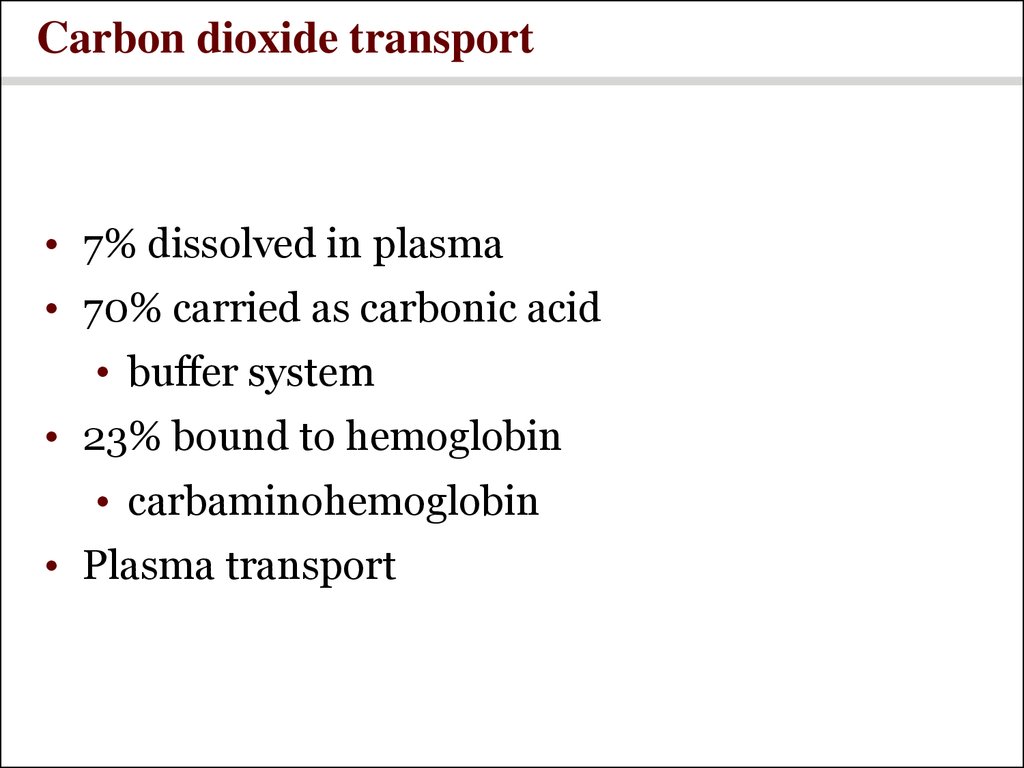
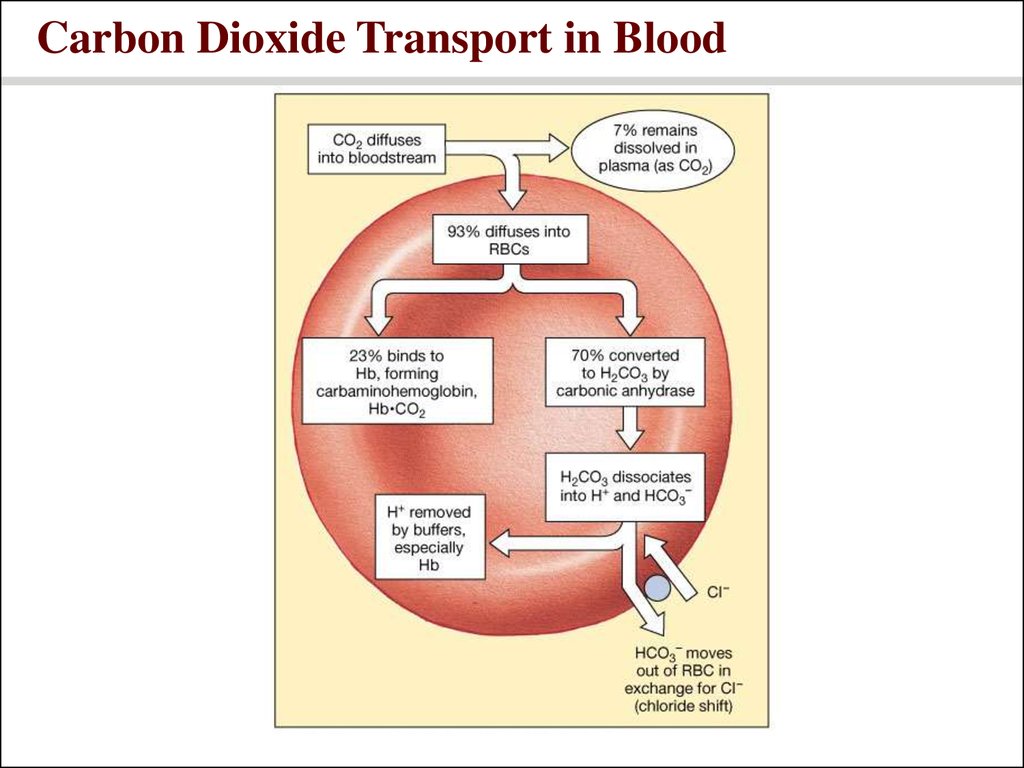
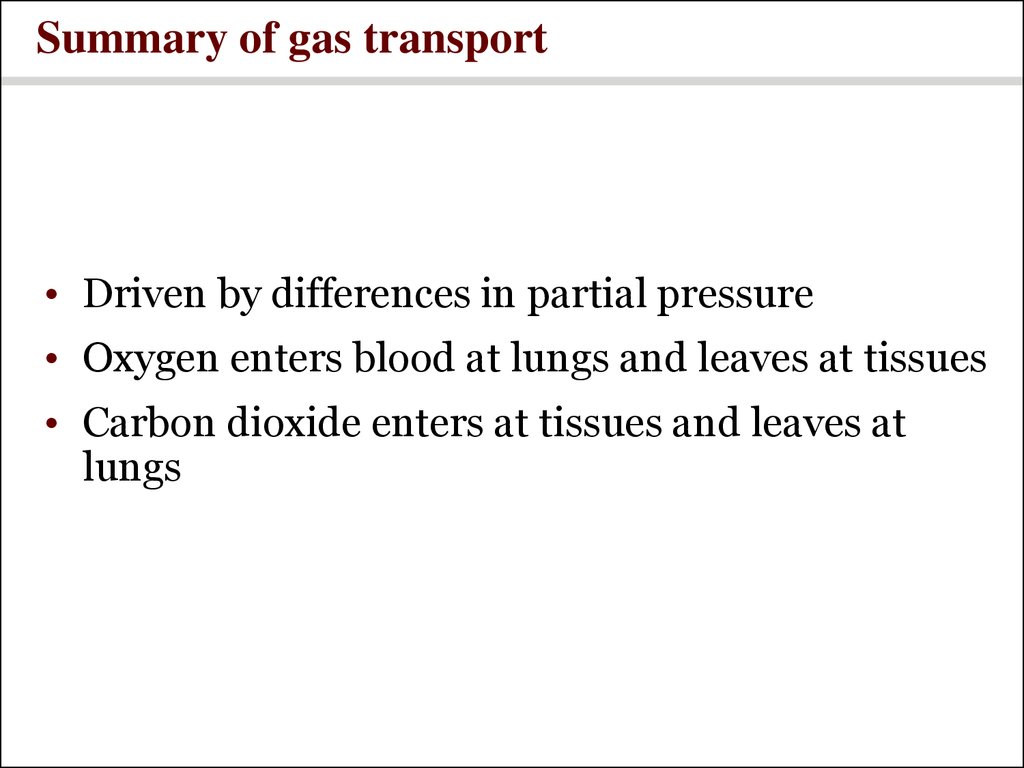
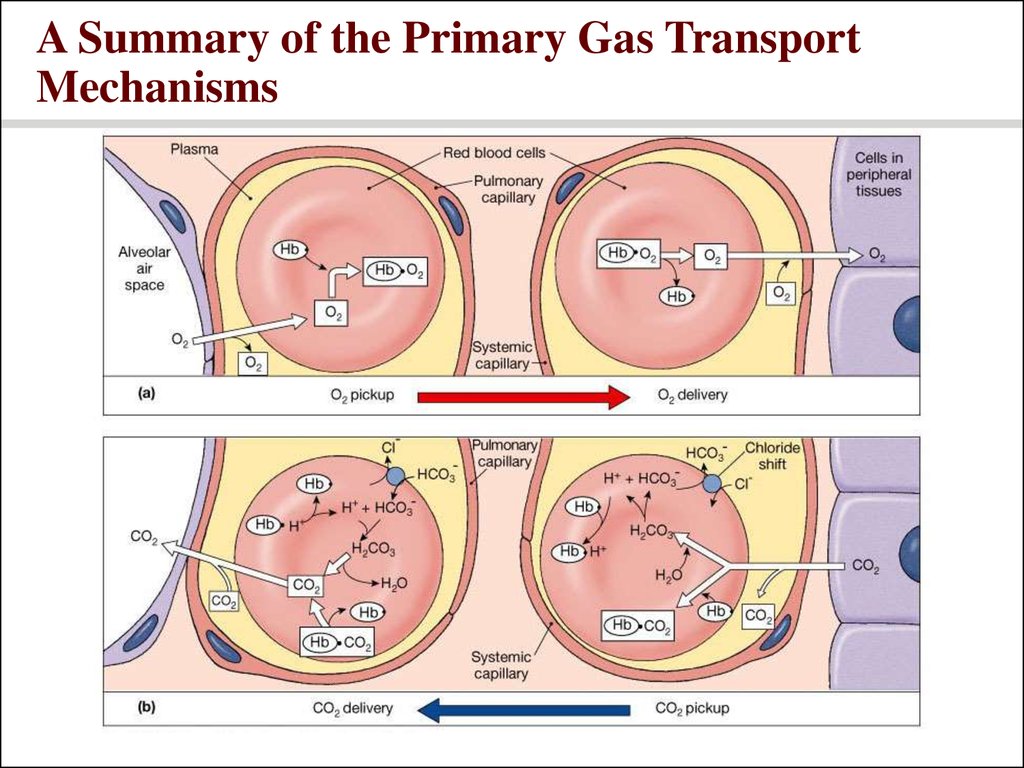
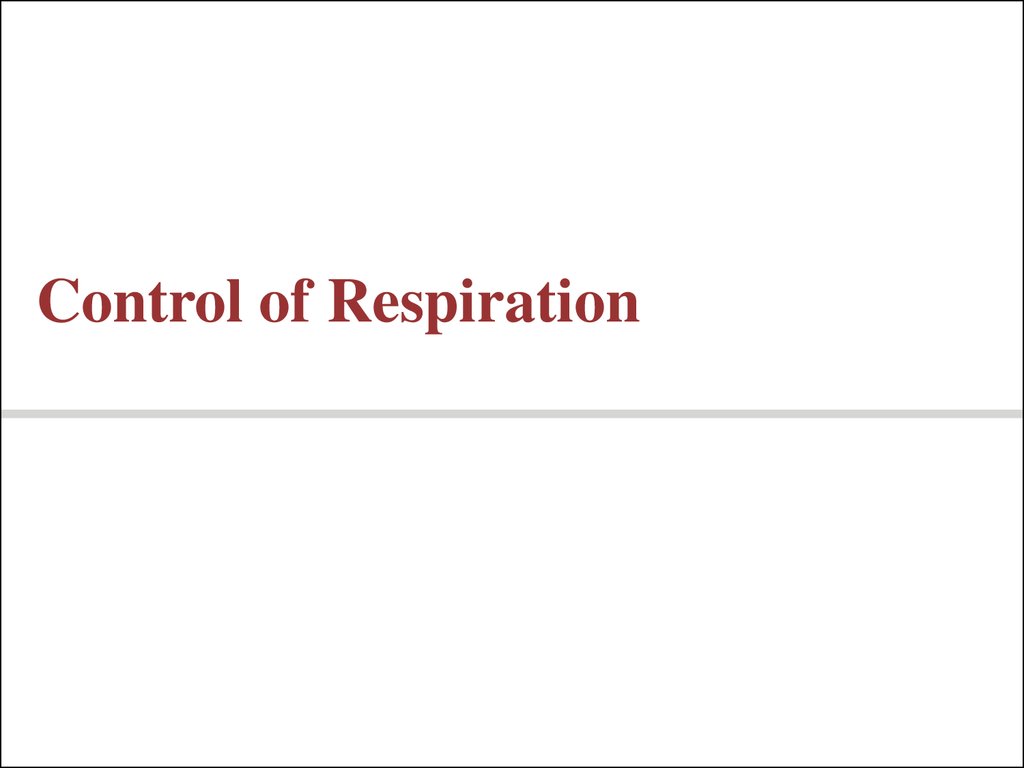
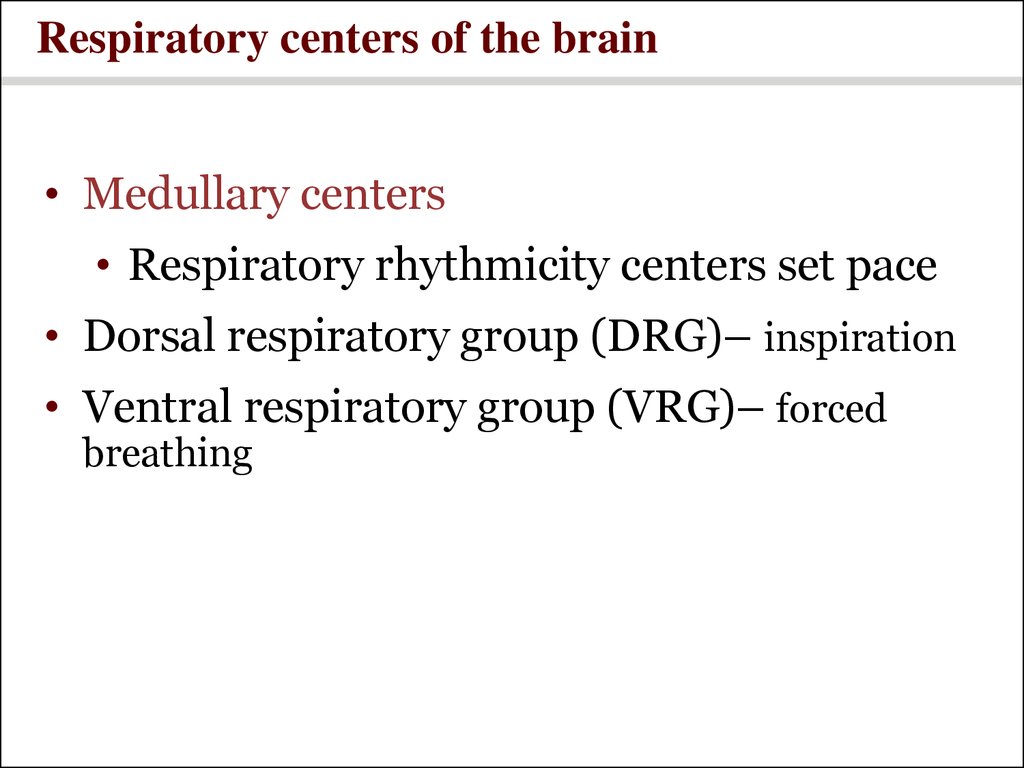

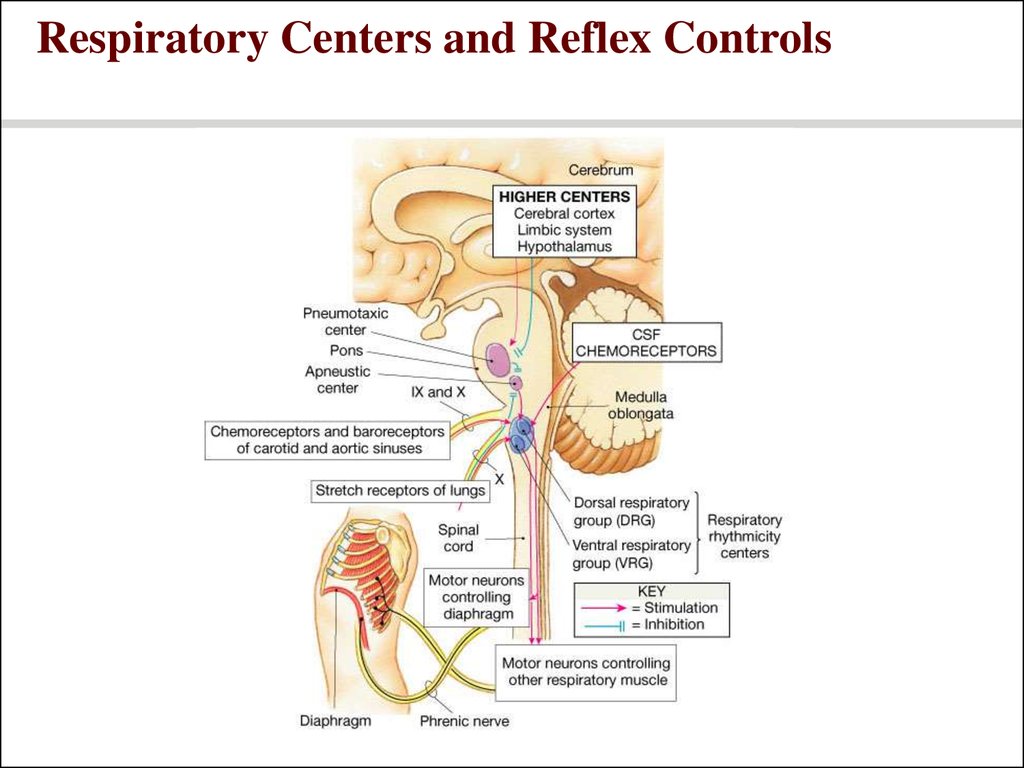
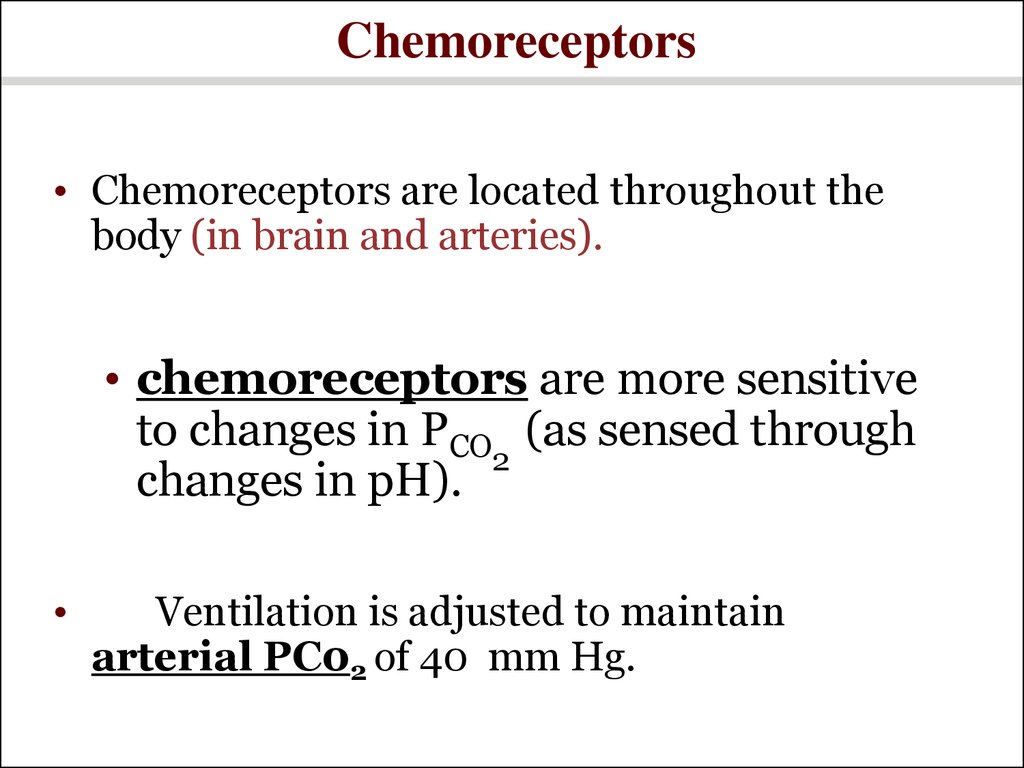

 Медицина
Медицина Биология
Биология








